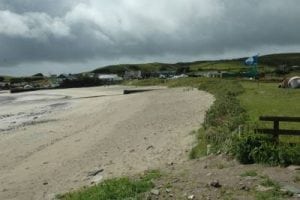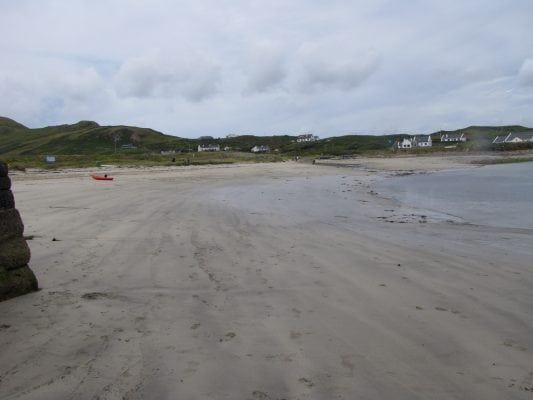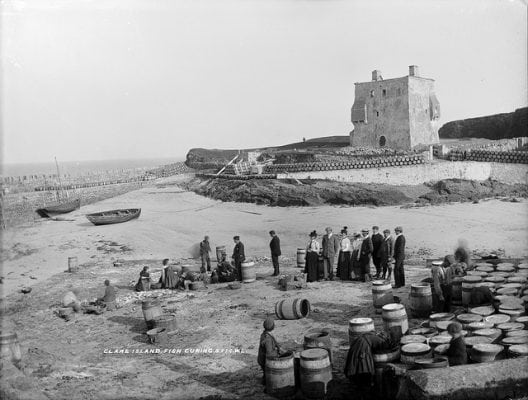- Created: August 28, 2012 11:34 am
- Updated: March 12, 2018 2:31 pm
- Distance Instructions
- Distance 0 m
- Time 0 s
- Speed 0.0 km/h
- Min altitude 0 m
- Peak 0 m
- Climb 0 m
- Descent 0 m
Clare is an island steeped in atmosphere of the past mostly on account of its one time associations with the great maritime clan of O’ Malley and the great sea captain and pirate Grace O’ Malley, known in Irish annals as Granuaile. The O’ Malley Clan were custodians of the deeply indented coast from Galway Bay to Donegal Bay. They guarded their territorial waters jealously. After the death of Granuaile in or around 1601 Clare Island passed out of O’ Malley domination to be held for the first time by Ulick Burke, Earl of Clanricard. Later in the seventeenth century it was confiscated by the crown and granted to an English adventurer who sold the island to O’ Malley of Belclare. Clare Island remained in O’ Malley ownership until the nineteenth century when Sir Samuel O’ Malley mortgaged it to a London Insurance Company. The last private proprietor was Mr. James McDonnell of Westport whose nieces inherited the island and sold it to the Congested Districts Board after it was divided into farms.
A variety of historic sites are located throughout Clare Island. A megalithic tomb, ten promontory forts, Iron Age huts and field systems, over 45 Fulachta Fiadh (bronze-age cookery sites) are all readily accessible on the island. The island is famous for the Carmelite Abbey located on the south of the island. It was founded in the thirteenth century as a cell of Knockmoy, County Galway. The present building dates from the fifteenth century and comprises a chancel, nave and sacristy. There is also the Granuaile Castle which occupies an elevated promontory to the south of the harbour. In the early nineteenth century Sir Samuel O’ Malley had the building renovated for use by the coastguard.
Gallery
Clare is an island steeped in atmosphere of the past mostly on account of its one time associations with the great maritime clan of O’ Malley and the great sea captain and pirate Grace O’ Malley, known in Irish annals as Granuaile. The O’ Malley Clan were custodians of the deeply indented coast from Galway Bay to Donegal Bay. They guarded their territorial waters jealously. After the death of Granuaile in or around 1601 Clare Island passed out of O’ Malley domination to be held for the first time by Ulick Burke, Earl of Clanricard. Later in the seventeenth century it was confiscated by the crown and granted to an English adventurer who sold the island to O’ Malley of Belclare. Clare Island remained in O’ Malley ownership until the nineteenth century when Sir Samuel O’ Malley mortgaged it to a London Insurance Company. The last private proprietor was Mr. James McDonnell of Westport whose nieces inherited the island and sold it to the Congested Districts Board after it was divided into farms.
A variety of historic sites are located throughout Clare Island. A megalithic tomb, ten promontory forts, Iron Age huts and field systems, over 45 Fulachta Fiadh (bronze-age cookery sites) are all readily accessible on the island. The island is famous for the Carmelite Abbey located on the south of the island. It was founded in the thirteenth century as a cell of Knockmoy, County Galway. The present building dates from the fifteenth century and comprises a chancel, nave and sacristy. There is also the Granuaile Castle which occupies an elevated promontory to the south of the harbour. In the early nineteenth century Sir Samuel O’ Malley had the building renovated for use by the coastguard.




